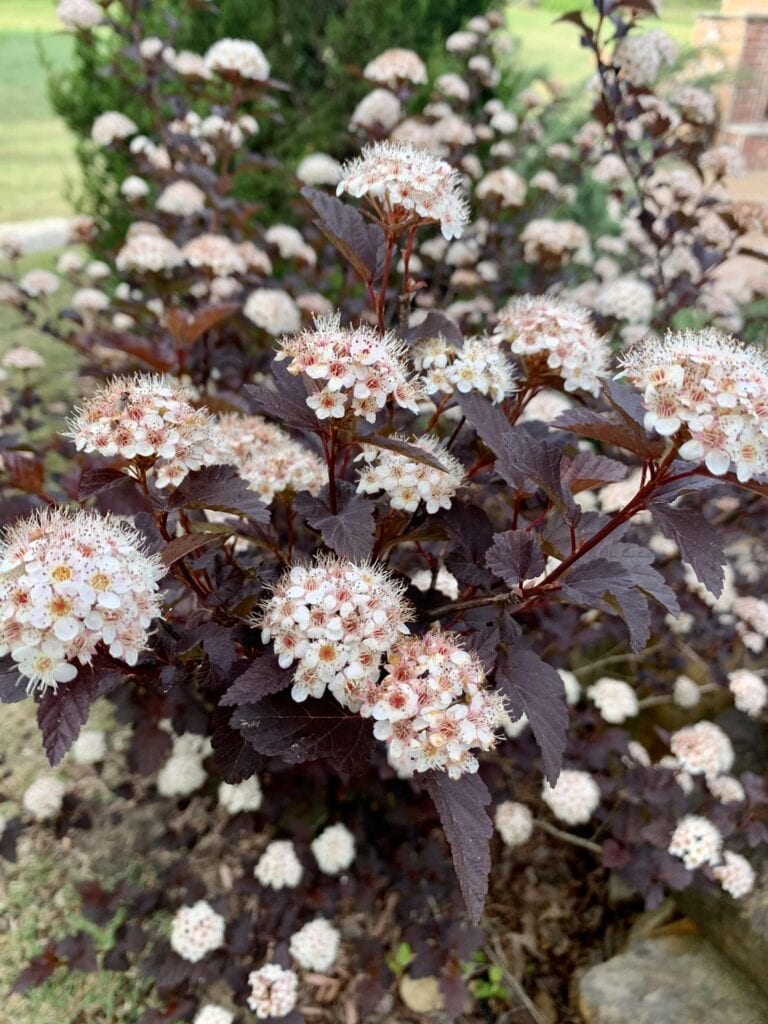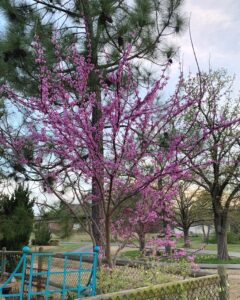Master Gardener
Kathy Berryhill
May is a super busy month for gardeners. Conditions are great to get everything in good shape and ready to withstand the hot summer temperatures. This is the time to get new plants in the ground and protect those that we already have, if they survived our winter blast!
Crepe Myrtles are a current hot topic. Some have leafed out already, some are showing sucker growth at the bottom, and others are showing no growth. A quick check on www.mesonet.org shows our soil temperature is still a cool 65 degrees and our air temperatures are just flirting with the 80’s. If your Crepe Myrtle isn’t growing yet, my recommendation is to wait until mid-June to declare it a “goner.” The plant may very well still be alive in its root system, but needing more warmth to flourish.

Many of our landscapes include Crepe Myrtles that have been trained to bloom in a “tree form.” That simply means that the plant is pruned to allow growth on a few major trunks with foliage at the top. If you want that look but are only left with new shoots at the base, it’s an easy job to retrain the plant by following a few guidelines:
1. If there is no growth on the old trunks, cut them all the way back to the ground. Use a hand pruning saw if possible. (Hand pruning saws can be found in most garden departments. They are a great tool and worth the purchase price!) A chainsaw can be used for this, but keep the blade from contacting the soil or it will dull the blade immediately.
2. Allow all new growth to flourish around the old stumps throughout the summer. These sprouts will still provide a nice bloom. Some gardeners may want to stop at this point and just allow the plant to thrive without the annual pruning.
3. Wait until fall to retrain to the tree form. Reduce the shoots down to the healthiest 12-15. Look for shoots that are strong and straight and cut the rest away. Protect them to keep them from being broken during the winter months.
4. The last step will be taken next spring. Select the best remaining 5-7 stems and cut the others away. This encourages the survival of the fittest and directs all of the plant’s resources into these stems.
But what if the plant doesn’t survive? What are some other options? If you prefer to just replace your Crepe Myrtle, local nurseries have been advertising a good stock of new ones for sale. Keep in mind that plant growers to our south suffered the same harsh weather we did, though, so the available inventory will be limited. This is a good time to look for a new cultivar of Crepe Myrtle. Varieties have been developed that can withstand colder temperatures. One example is “Natchez,” a fast growing, long flowering plant with white blooms. Ask the nursery staff for other recommendations if other colors are desired.
Lastly, consider replacing Crepe Myrtles with a more cold-tolerant replacement shrub. Examples include Vitex, Blue Muffin Viburnum, Kaleidoscope Abelias, Diablo Ninebark, Sunshine Ligustrum and Weigelias. All of these shrubs offer more benefits to our pollinators than the Crepe Myrtle and can enhance your landscape.
Would you like more inspiration? You’re invited to tour the yards of 4 local Master Gardeners at the 2021 Creek County Master Gardeners Garden Tour. This event will take place on Saturday, June 19th. Next week’s article will have full details. Save the date!










